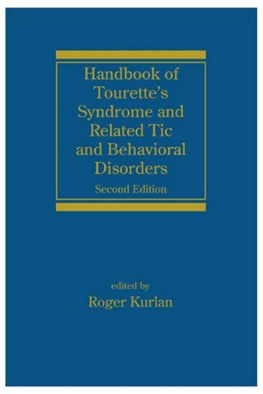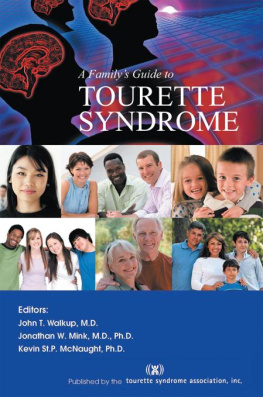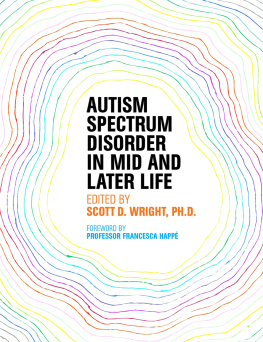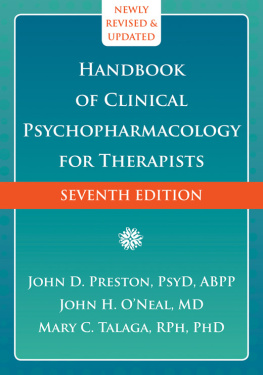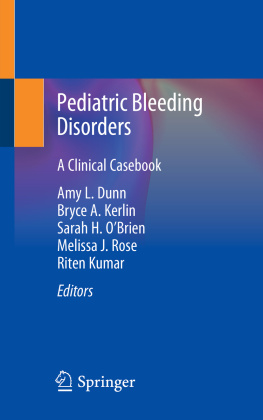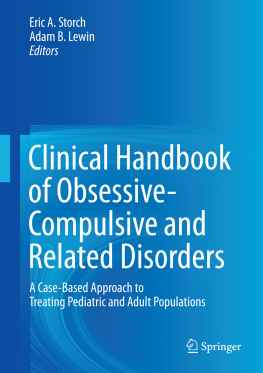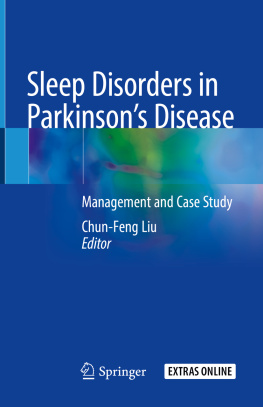Preface
When the first edition of this book was published in 1993, I commented how notions regarding Tourettes syndrome (TS) had undergone recent dramatic changes. Major shifts in views of the disorder included identification of its complex spectrum of clinical features (including tics and specific behavioral disorders, particularly obsessive-compulsive disorder and attention deficit hyperactivity disorder), establishment of heredity as a major etiological factor, and recognition that, rather than a rare disorder, it occurs quite commonly in the population.
Views of TS continue to evolve rapidly, resulting in the need to convey this important information in a second edition. New data suggest that the TS behavioral spectrum extends to include anxiety disorders and rage attacks. More and more complexities in the hereditary transmission pattern of TS are becoming apparent, posing new challenges in the longstanding research attempts to identify involved genes. Recent epidemiological studies indicate that perhaps 1% of all schoolchildren have TS, with up to 25% of children with school problems demonstrating tics. A novel potential cause of at least some cases of TS has been proposed, namely, a poststreptococcal autoimmune process, which remains highly controversial. There have also been major advances in the treatment of TS with the availability of atypical antipsychotic drugs, guanfacine, new long-acting stimulants, and more antiobsessional drugs. In short, important developments have occurred in virtually all the topics covered in the first edition, making the publication of this second edition important and timely.
iv Preface
Appreciation and thanks are extended to the authors, who have provided clear, concise, and up-to-date information. I hope this book will help you appreciate TS as a fascinating condition that will help us learn about the most basic aspects of human behavior.
Roger Kurlan
Motor and Vocal Tics Stanley Fahn
Columbia University College of Physicians & Surgeons and The Neurological Institute of New York Presbyterian Hospital
New York, New York, U.S.A.
INTRODUCTION
Historically, the French used the term tic, or tique, for centuries to denote an unpleasant gesture (1). The term was first used to describe certain trick movements in horses in 1665 (2). Then it was used to refer to distasteful motor acts in humans, but in 1756, the term tic douloureux was coined (cited in Ref. 2) (trigeminal neuralgia in todays lexicon), thereby setting up the different, confusing meanings for the word tic. It seems preferable to remain with the original usage, namely, that tic refers to certain unwanted motor acts. The term convulsive tic (tic convulsif), as used by Charcot in Goetz (3) and Gilles de la Tourette (4), connotes the abruptness and momentariness of the abnormal movement (5).
Fahn (6) defined motor tics as consisting of patterned sequences of coordinated involuntary movements. Interestingly, the classic treatise on tics by Meige and Feindel (7) in 1907 and the earlier publication by Guinon (8) had a similar definition of ticssystematized, involuntary, coordinated movements. These definitions apply best for complex tics; for simple tics, a single myoclonic-like contraction is the common feature, and these are not coordinated movements, although they can be repetitive.
Because complex tics resemble stereotypies, the question arises as to whether tics should be listed as a subcategory of stereotypies rather than
2 Fahn
an independent category of hyperkinetic disorders. Meige and Feindel (9) distinguished between tics and stereotypies by describing the former as acts that are impelling but not impossible to resist, whereas the latter, although illogical, are without an irresistible urge. Shapiro et al. (10) prefer to reserve stereotypy for those movements seen in schizophrenia, autism, and mental deficiency. I also prefer to list tics in its own hyperkinetic dyskinesia category.
Although a complex tic often recurs, and thereby has features of a stereotypy, simple tics more closely resemble myoclonic jerks. Therefore, analogously, if complex motor tics are to be classified as a stereotypy, then simple motor tics should be classified as part of the myoclonias. It is this diversity of motor tics that sets their phenomenology apart from all others. Furthermore, as will be pointed out below, tics have many other features that aid in their diagnosis, such as their suppressibility, their accompaniment by an underlying urge or compulsion to make the movement, their variability, their migration from one body part to another, their abruptness, their brevity, and the repetitiveness, rather than randomness, of the particular body part affected by the movements.
As will be discussed below, tics as occurring in Gilles de la Tourette syndrome [usually referred to as Tourettes syndrome (TS)] can be somatic motor phenomena (motor tics) or phonic phenomena (equivalently referred to as phonic or vocal tics). These are sounds produced by moving air through the nose, mouth, or throat. In contrast to many other movement disorders, the movements and sounds are not constantly present (except when extremely severe), but occur out of a background of normal motor activity; hence, there is a paroxysmal pattern to them. Motor and vocal tics can be simple or complex. Meige and Feindel (11) emphasized motor tics as being either clonic or tonic. The more common clonic tics are rapid and brief in duration; the less common tonic (or dystonic) tics are contractions that are longer in duration.
PHENOMENOLOGY OF TICS Motor Tics
Simple Motor Tics
Motor tics can be simple or complex (Table 1). Simple motor tics are abrupt, sudden, and usually brief movements. The most simple and brief would be an isolated jerk resembling a myoclonic jerk in speed (i.e., lightning-like). More often appearing as a single, isolated jerk, there would be a repetitive run of these fast movements, making their distinction from myoclonus easier. In addition, rather than the tic repeating in the same site, a different body part
Motor and Vocal Tics 3
Table 1 Phenomenological Characteristics of Tics
Motor tics
(1) Simple motor tics (a) Clonic tics
(i) Isolated, single movement
Examples: eyeblinking, shrug, eye movement, nose flare Differential diagnosis: myoclonus, chorea
(ii) Run of simple movements
Examples: repetitive eyeblinking, arm-jerking Differential diagnosis: blepharospasm
(b) Dystonic tics
(i) Isolated, single movements
Examples: prolonged oculogyric deviation, head deviation, mouth-opening Differential diagnosis: focal and segmental torsion dystonia, oculogyric crisis
(2) Complex motor tics (a) Clonic tics
(i) Nonpurposeful, appearing purposeful, acts
Examples: tossing head, touching body, rubbing, spitting
Differential diagnosis: stereotypies, mannerisms, akathitic movements, hyperekplexia
(ii) Acts not appearing purposeful
Examples: head-shaking, trunk-bending, series of different facial twitchings Differential diagnosis: stereotypies, mannerisms, akathitic movements, hyperekplexia, and other exaggerated startle syndromes
(b) Dystonic tics
Examples: bruxism with sustained head tilt
Differential diagnosis: segmental or generalized torsion dystonia
Vocal tics
(1) Simple vocal tics
Examples: throat-clearing, sniffing, grunting, barking, yelping, squeaking, clicking Differential diagnosis: moaning with akathisia, parkinsonism; squeaking and grunting with oromandibular dystonia and Huntingtons disease; humming with blepharospasm and Meige syndrome
(2) Complex vocal tics
Examples: whistling, belching, coprolalia, echolalia, palilalia
Differential diagnosis: palilalia with stuttering; echolalia with exaggerated startle syndromes; coprolalia with encephalitis; spitting with Huntingtons disease and neuroacanthocytosis
Next page
